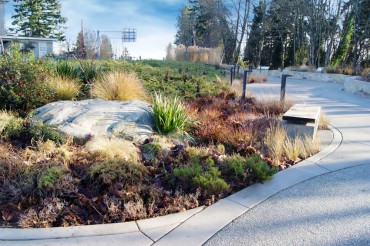 Welcome to a series of articles we will write on unique, innovative and creative park and public space projects in West Puget Sound that contribute to our community in terms of quality of life. We hope to identify the community leadership, the project’s funding, the partnerships that were created in order to build it, the innovative and unique aspects, as well as lessons learned that could be used in other communities.
Welcome to a series of articles we will write on unique, innovative and creative park and public space projects in West Puget Sound that contribute to our community in terms of quality of life. We hope to identify the community leadership, the project’s funding, the partnerships that were created in order to build it, the innovative and unique aspects, as well as lessons learned that could be used in other communities.
So often, we enjoy the benefit of these wonderful spaces but never really understand their history, who provided the leadership and how they came together. We hope to write about projects such as the Port Gamble trail system, Fort Warden, Bremerton’s waterfront development, Poulsbo’s Fish Park and the Port Townsend Maritime Center, among others.
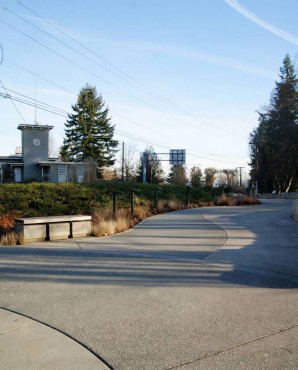 The Waypoint
The Waypoint
The Waypoint Park on bucolic Bainbridge Island is a sparkling public space that has a reach and influence far beyond its one-half-acre size. Bainbridge, a 30-minute ferryboat ride from downtown Seattle, accommodates 16 million automobile trips to and from its ferry landing each year. At the southwest corner of the landing, directly west of the Bainbridge Island Museum of Art and immediately north of the island’s evolving business district is The Waypoint. This unique and special public space is a testimonial to the power of strong and persistent citizen leadership.
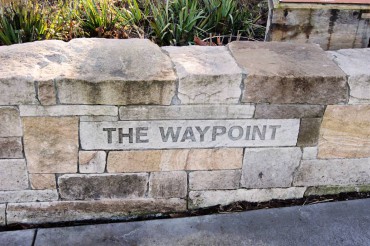
This small site is so strategically located that it has become a community landmark and a symbol of how Bainbridge is evolving into an attractive destination to live and visit. This former Unocal gas station site was surrounded for years by a chainlink fence and was the first thing people saw when they got off the ferry — the antithesis of how Bainbridge Island residents viewed their community. The site was a contaminated nuisance, neglected for decades, yet stubbornly resistant to sporadic initiatives aimed at bringing it into the 21st century.
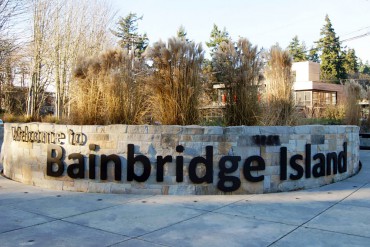 The logjam was eventually breached when the city of Bainbridge Island and Kitsap Transit jointly purchased the site from Unocal for $400,000. The city envisioned an entryway park and Kitsap Transit wanted the right to use up to 40 feet of frontage for an extra bus lane. Unfortunately, both entities still faced an uphill struggle to develop the site because of the potential cleanup cost and reluctance by elected officials to underwrite the unknown cost of the cleanup.
The logjam was eventually breached when the city of Bainbridge Island and Kitsap Transit jointly purchased the site from Unocal for $400,000. The city envisioned an entryway park and Kitsap Transit wanted the right to use up to 40 feet of frontage for an extra bus lane. Unfortunately, both entities still faced an uphill struggle to develop the site because of the potential cleanup cost and reluctance by elected officials to underwrite the unknown cost of the cleanup.
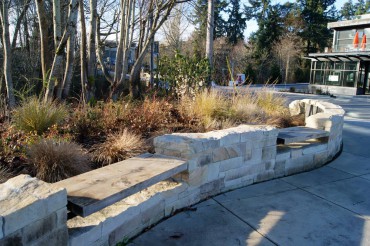 Into this toxic environment rode a band of citizen activists led by Jim Chapel, Bruce Weiland and Steve Davis. Seasoned community leaders associated with a broad range of social institutions, from the Rotary Club and Art Museum to the local school board, they decided to use their collective experience, contacts and skills to transform the eyesore into a community treasure.
Into this toxic environment rode a band of citizen activists led by Jim Chapel, Bruce Weiland and Steve Davis. Seasoned community leaders associated with a broad range of social institutions, from the Rotary Club and Art Museum to the local school board, they decided to use their collective experience, contacts and skills to transform the eyesore into a community treasure.
Their first order of business was to form a steering committee that would include these three leaders plus representatives of Rotary, Kitsap Transit, Bainbridge Island Park District, Jones and Jones Architects, Bainbridge City Council and private legal and construction firms. The steering committee approached the landowners, Kitsap Transit and the city of Bainbridge Island, to ascertain their interest in creating a special public space on their property. The answer was yes, with the proviso that neither government agency would be able to contribute financially to the development or management of the project.
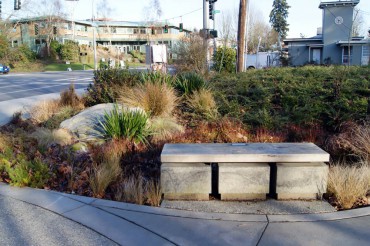 The committee began its work by asking all entities what they needed from the space. The city wanted a beautiful and functional public space that wouldn’t cost any city funds to build or maintain. Kitsap Transit wanted the flexibility to add a future bus lane but also had no interest in contributing financially to the project. The Bainbridge Island Park District wanted a park presence at the island’s gateway. They were also not willing to contribute capital dollars to the project, but were prepared to assume long-term maintenance and operating responsibility.
The committee began its work by asking all entities what they needed from the space. The city wanted a beautiful and functional public space that wouldn’t cost any city funds to build or maintain. Kitsap Transit wanted the flexibility to add a future bus lane but also had no interest in contributing financially to the project. The Bainbridge Island Park District wanted a park presence at the island’s gateway. They were also not willing to contribute capital dollars to the project, but were prepared to assume long-term maintenance and operating responsibility.
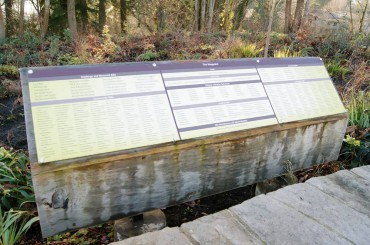 With this information, the committee launched a twin fundraising and planning strategy. On the planning front, the committee adopted 20 guidelines for project development and gave these guidelines to the architect to help shape the project design.
With this information, the committee launched a twin fundraising and planning strategy. On the planning front, the committee adopted 20 guidelines for project development and gave these guidelines to the architect to help shape the project design.
Two things could not happen on the site: parking or active recreation. The committee hosted three community meetings where citizens gave their input. After evaluating the public input, a final design was created and submitted to the city of Bainbridge Island for approval. The design included a walkway, plaza, entryway sign, historic markers and native plants. The city enthusiastically approved the final design. The estimated cost for the project was $270,000, which included a lot of donated support.
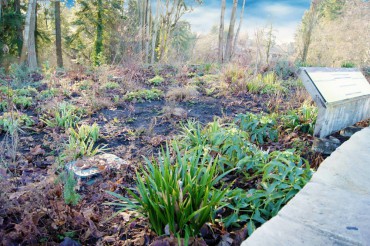 A memorandum of understanding was negotiated between the city and the steering committee that allowed the citizens group to raise funds, conduct a public process, select the architect and contractor and oversee the management of the project. The steering committee leaders coaxed a lead matching gift of $80,000 from the Rotary Club. The Rotary also agreed to manage the project’s finances. Ultimately, the final $190,000 was raised privately from an array of community donors, including a $50,000 contribution from friends of the Bainbridge Island Museum of Art and $43,000 from a direct mail campaign.
A memorandum of understanding was negotiated between the city and the steering committee that allowed the citizens group to raise funds, conduct a public process, select the architect and contractor and oversee the management of the project. The steering committee leaders coaxed a lead matching gift of $80,000 from the Rotary Club. The Rotary also agreed to manage the project’s finances. Ultimately, the final $190,000 was raised privately from an array of community donors, including a $50,000 contribution from friends of the Bainbridge Island Museum of Art and $43,000 from a direct mail campaign.
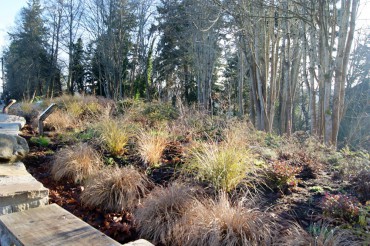 In 2012, The Waypoint, a beautiful public space, was proudly opened to widespread acclaim from the community. The project is a simple, elegant design of a small public space championed by a selfless, competent and visionary group of citizens. A perfect example of what can happen when there is a vision, a good plan, lots of partners and passionate leadership.
In 2012, The Waypoint, a beautiful public space, was proudly opened to widespread acclaim from the community. The project is a simple, elegant design of a small public space championed by a selfless, competent and visionary group of citizens. A perfect example of what can happen when there is a vision, a good plan, lots of partners and passionate leadership.
Cary Bozeman is the former mayor of Bellevue and Bremerton. Lee Springgate is the former director of parks for the city of Bellevue.




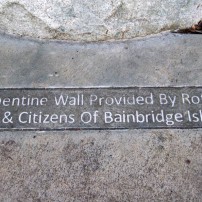
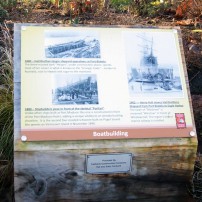
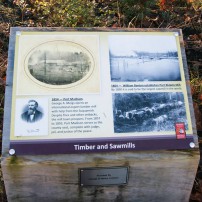
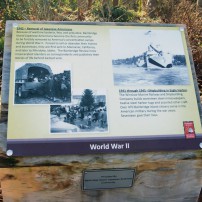
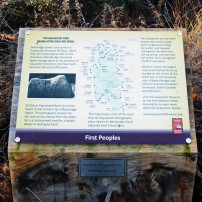
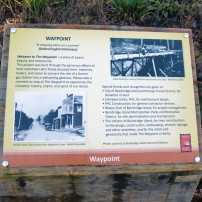

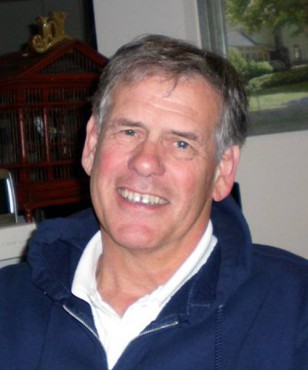
























Comments